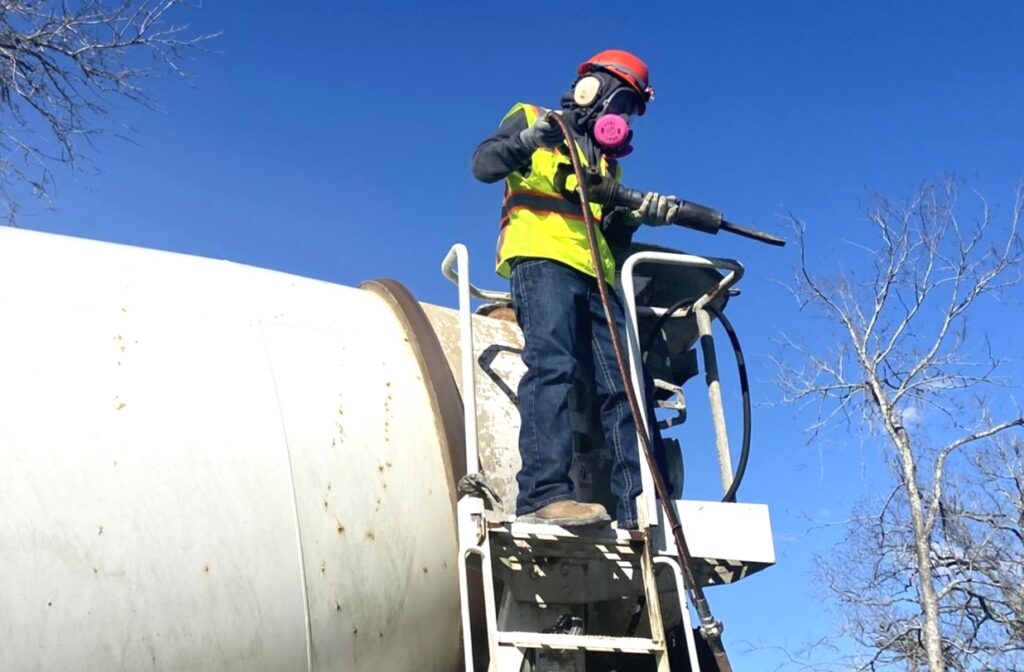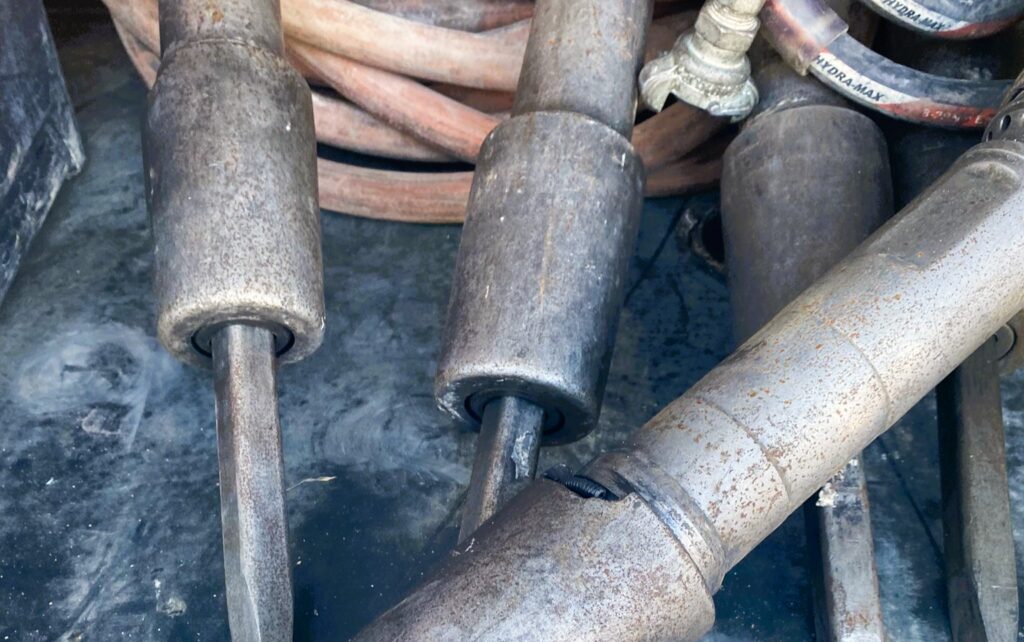
Power and Precision: The Pneumatic Tools Behind Drum Mixer Chipping
Concrete chipping is essential to keeping a drum mixer in working order, but even necessary maintenance isn’t without its risks. When handled incorrectly, this tough, gritty job can pose serious dangers not only to those performing the work, but to the drum mixer itself. Having the right tools for the task and a firm understanding of how to use them is key.
At General Chipping, we rely on handheld pneumatic jackhammers to remove the hardened concrete that accumulates along drum mixer walls. And although these powerful tools might seem straightforward, crews like ours spend months, and often years, honing their skills to do such work in the safest, most efficient manner possible. Let’s dive into the role pneumatic tools play in chipping concrete and special considerations that come into play.
How Do Crews Go About Chipping Concrete, and Why is it Important?
Before getting into the tools in use and safe practices, it’s important to understand the work itself. So, what goes into chipping concrete, and why do we do it?
Concrete chipping involves trained team members entering the drum mixer — or, for smaller mixers, reaching inside — and using handheld pneumatic jackhammers to break away dried material that has formed along the drum’s walls. This tough material clings to interior surfaces with each concrete pour. And, while buildup is of little concern early on, as that material grows thicker, it reduces a mixer’s capacity, adds weight that can result in mechanical issues and has the potential to impact the strength and aesthetic of a completed pour. Regular maintenance helps to keep a fleet healthy while helping crews avoid costly repairs and replacements.
Although a company’s specific maintenance timeline will vary based on factors such as a mixing drum’s brand and age, the concrete blends being poured and the volume of work a crew takes on, industry experts recommend booking chipping every quarter. Remember, chipping concrete is dangerous and noisy work which takes place in confined spaces. As such, it should be left solely to professional crews.

Staying Safe with Pneumatic Tools
As we’ve mentioned, pneumatic tools such as handheld jackhammers play a vital role in drum mixer chipping. These tools use compressed air to drive an internal piston which repeatedly strikes a chisel or bit to break apart hardened material.
This fast, powerful process has the potential to result in health and safety concerns. Here are some hazards that come into play with the work, and steps concrete chipping pros take to ensure safer job sites:
- Flying Debris: Because the process of chipping concrete requires maintenance pros to carry out their work in cramped spaces, crews are regularly at risk of being hit by chipped material at high speeds. Crews should wear full protective gear, including safety glasses, gloves, steel-toe boots and long-sleeved clothing, to protect themselves against projectiles and abrasions.
Note: Although not related to pneumatic tools, cement dust is another concern with concrete chipping work. Properly fitting respirators help protect crews against dust exposure which could result in long-term lung issues and illness.
- Excessive Vibration and Strain: Handheld pneumatic jackhammers create strong vibrations, and the act of chipping concrete often requires crews to work in awkward positions for extended periods of time. Without proper precautions, this can lead to fatigue, repetitive motion injuries and long-term musculoskeletal problems. Anti-vibration gloves, ergonomic floor mats and scheduled rest breaks can help reduce strain and keep crews safe.
- Accidental Discharge: Pneumatic tools are built with safety clips and attachments that help prevent unintentional activation. If these attachments are missing or faulty, the risk of accidental discharge increases significantly. Crews should inspect tools before use to ensure all safety mechanisms are in place and functional. In addition, tools should be disconnected when not in use.
- Trip and Tangle Hazards: The air hoses that power pneumatic tools can become tripping hazards if not properly secured. Crews should make a habit of keeping cords and hoses organized and away from walkways to minimize the likelihood of falls or equipment damage.
- Risk of Hearing Loss: Although they might not seem overwhelmingly loud at first, pneumatic jackhammers can exceed safe noise exposure levels over time. To avoid long-term hearing damage, crew members should wear well-fitting earplugs or earmuffs rated for high-decibel environments during every chipping job.
Regular maintenance is the best way to keep your redi mix trucks and drum mixers serving your operations well, but that maintenance must be handled the right way. It’s important to work with trained and licensed teams who understand how to use pneumatic tools to clean your drums without damaging them. Accomplish this, and you can rest easy knowing your valuable equipment will come out clean and stand ready for upcoming projects.
If you have questions about any of the above, or if you’re interested in learning more about General Chipping’s concrete chipping, silo cleaning and central mixer cleaning services, feel free to reach out at any time. Our crew is here to keep you ready to roll.
